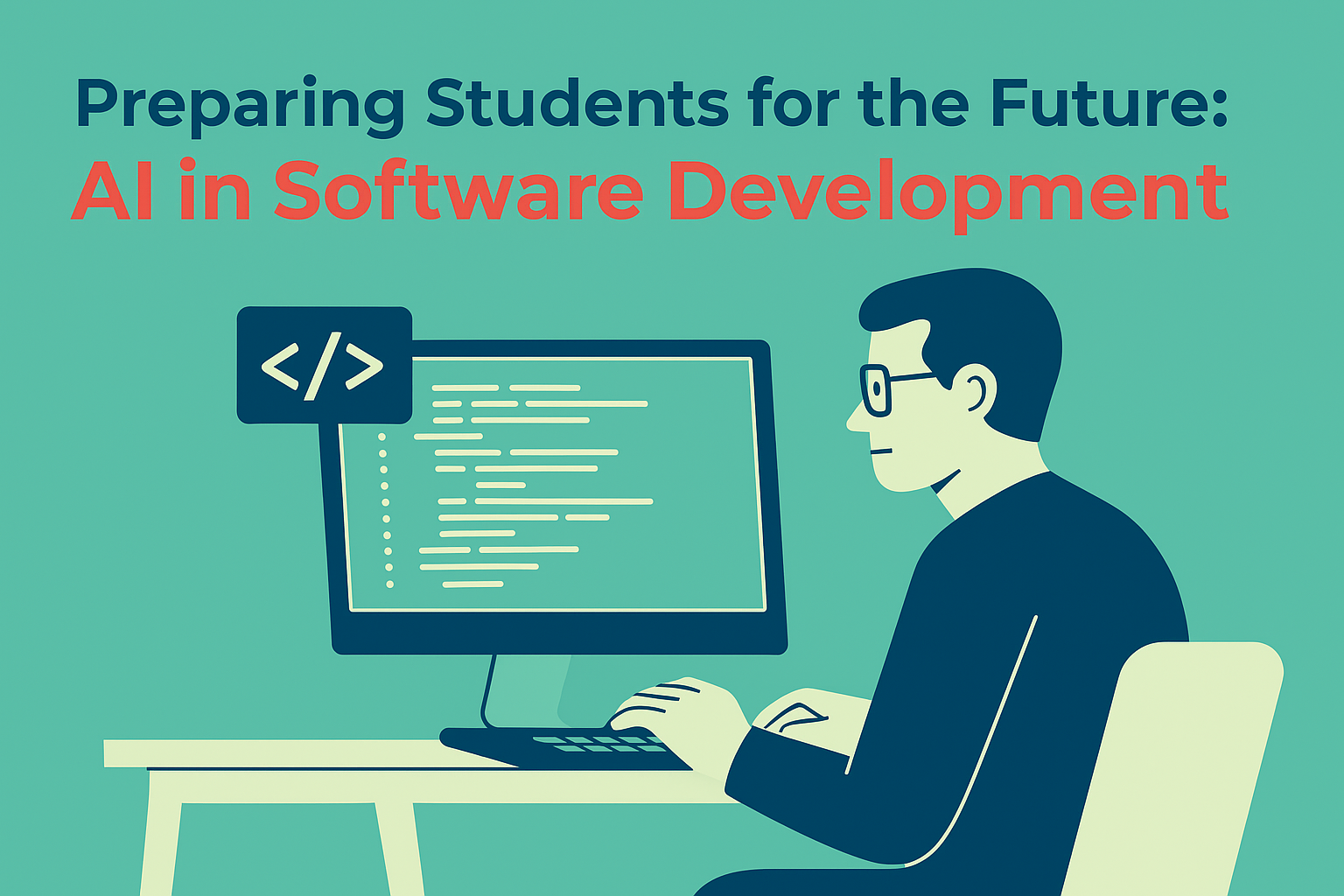30 April 2025
Preparing Students for the Future: Insights from Anthropic’s Research on AI in Software Development

As artificial intelligence (AI) continues to reshape the software development landscape, educators play a pivotal role in preparing students for this evolving world. Anthropic’s recent research provides valuable insights into AI adoption in software development and underscores the importance of integrating AI literacy into education.
Key Findings Relevant to Educators
1.AI Significantly Automates Coding Tasks
Anthropic’s analysis of 500,000 coding-related interactions revealed that 79% of conversations on Claude Code involved automation, where AI directly performs tasks, compared to 49% on the general Claude.ai platform.
2.Focus on User-Facing Applications
The study found that web-development languages such as JavaScript and HTML were the most common in the dataset, indicating a strong focus on building user interfaces and experiences.
3.Startups Lead in AI Adoption
Startups are the primary early adopters of Claude Code, with 33% of conversations serving startup-related work, compared to only 13% for enterprise-relevant applications.
How Can We Prepare Future Programmers for an AI-Enhanced Software Industry?
Anthropic’s research reveals that AI is rapidly becoming a co-pilot in software development, particularly in automating repetitive coding tasks and accelerating development workflows. If our students are to succeed as tomorrow’s developers, they need to understand not just how to write code—but how to work with AI.
Here are some ways educators can begin preparing students for this future:
1.Teach AI-Assisted Development as a Core Skill
Tools like Claude, GitHub Copilot, and ChatGPT are already being used in professional environments to write boilerplate code, refactor functions, and debug programs. Integrate these tools into programming lessons—not as shortcuts, but as collaborative tools that still require human understanding and direction.
Try this in the classroom: Ask students to solve a problem both with and without an AI assistant. Then discuss the differences in process, accuracy, and efficiency.
2.Focus on Code Quality, Not Just Syntax
With AI handling more of the syntax-heavy work, human developers will stand out by writing clear, efficient, and maintainable code. Shift your teaching towards clean code principles, documentation, and testing—skills AI still struggles to master.
3.Embed Software Engineering Best Practices Early
Students should understand version control (e.g., Git), agile development methods, and collaboration tools. These practices become even more essential when humans and AI are co-authoring software.
4.Highlight Human Strengths in Problem-Solving and Design
AI is great at executing tasks, but humans are still better at identifying the right problems to solve and designing user-centered solutions. Encourage students to work on real-world projects that involve thinking through user needs, product design, and impact.
5.Explore the Ethics of AI in Development
As developers, students will need to understand the ethical implications of integrating AI into products—especially when those products impact users’ privacy, safety, or decision-making. Case studies and classroom debates can help build this critical awareness.
Balancing Exams with Real-World Readiness
As teachers, we often face the challenge of balancing curriculum demands—like preparing students for their GCSEs or A levels and guiding them through the Non-Exam Assessment (NEA)—with the need to equip them for life beyond the classroom. By weaving in real-world development practices where possible, we can ensure that our students leave school not only exam-ready, but future-ready—confident, capable, and prepared to thrive in an industry increasingly shaped by AI.




Discussion
Please login to post a comment